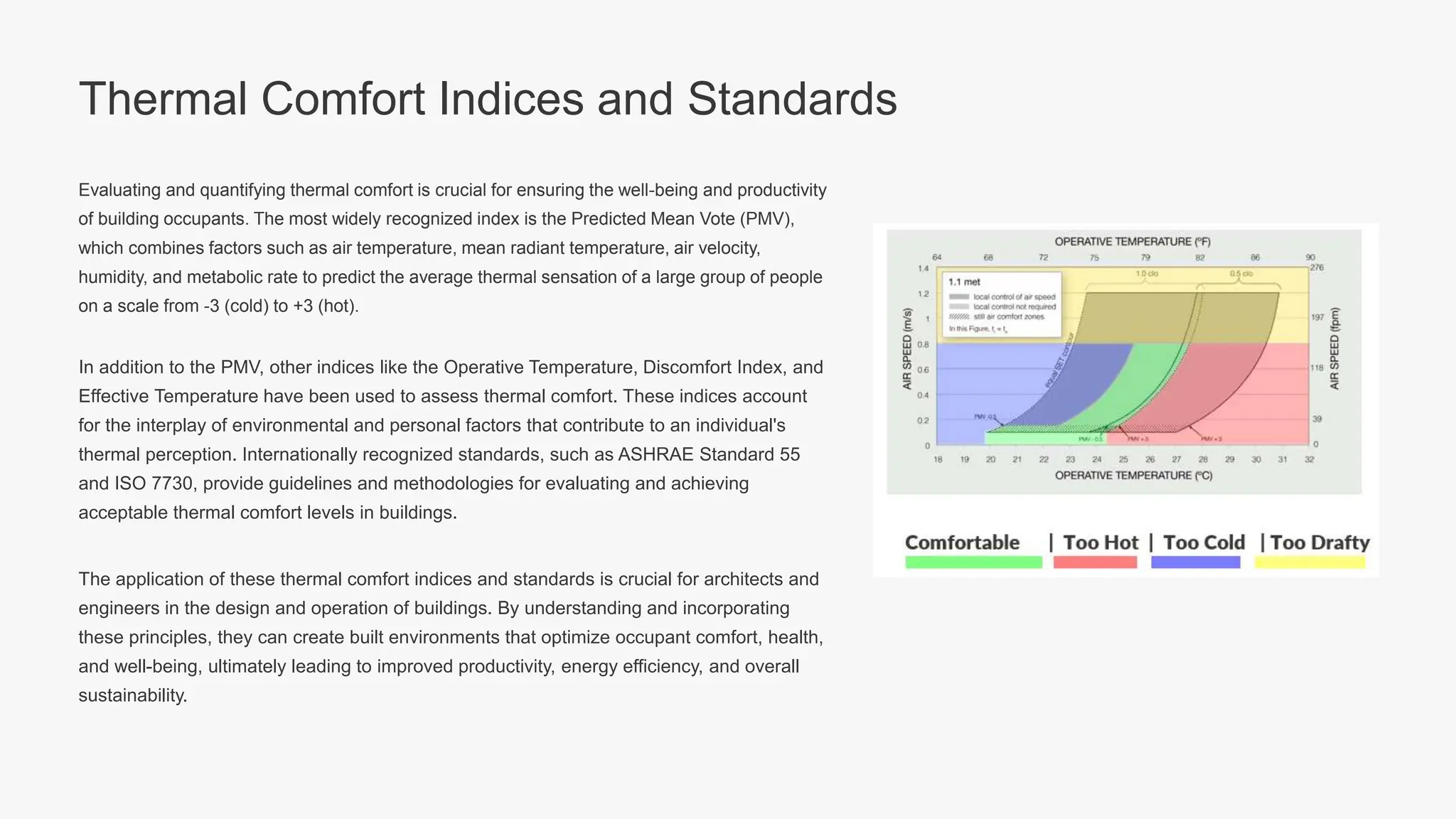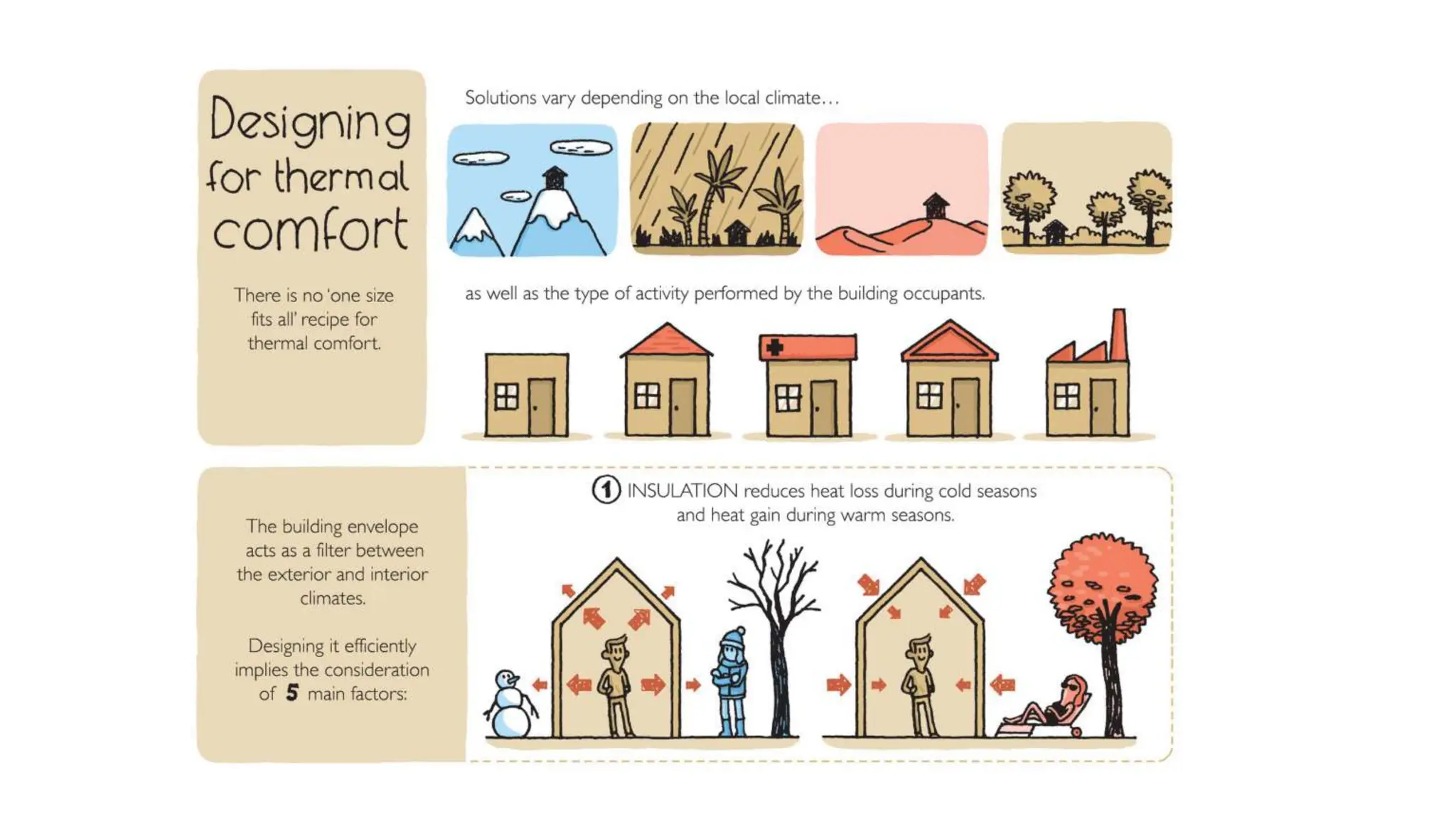The document discusses thermal comfort as an essential aspect of human well-being, emphasizing the role of the human body's thermoregulation and the importance of optimizing design to ensure comfort in built environments. It outlines various factors that influence thermal comfort, including environmental, personal, and physiological elements, and highlights the significance of passive and active design strategies to enhance comfort while promoting energy efficiency. The conclusion advocates for a holistic and interdisciplinary approach to achieving optimal thermal comfort, integrating personalized solutions and sustainable practices in future building designs.











